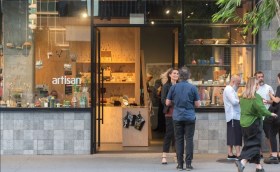Certainly, the creative workforce is distinctive along some key axes. Of all the people employed in the Australian creative industries at the 2006 Census, for example,12 per cent are sole practitioners compared with 7 per cent overall for all other service industries. Sixty per cent of employment in the industry classification for Creative Artists, Musicians, Writers and Performers is self-employment. There are four other creative industries sectors having self-employment rates twice the
This might support claims for distinctive precarity, but other findings complicate such a picture. Compared with other employment, particularly in the traditional professions, creative employment disproportionately occurs outside the creative industries themselves. In other words, creatively trained people are more likely to be working outside the specialist creative industry sectors than inside them, and this is the case in most countries, and has been the case for a long time. As we have seen, the degree of embeddedness is greatest in the many ‘design’ occupations: 60 per cent of the employment for design occupations in Australia occurs outside of specialist design industry sectors.
The Australian data show that, while there has been a slowing of growth between 2001 and 2006, when viewed over a longer time period the creative industries have grown at a significantly faster pace than the aggregate economy. The Centre for International Economics (CIE 2009: 7) has updated CCI’s analysis of Australian census data to show that, over the 11 years to 2007–08, the creative industries expanded at an average annual rate of 5.8 per cent, compared with aver- age GDP growth of 3.6 per cent over that period.
Growth is spread across a broad range of industry sectors and creatives are relatively well paid (all segments are above the national average except for music and the performing arts). Outside these studies, it has also been established that the creative workforce has higher levels of formal qualification than the workforce as a whole.
If we can generalise at all from these data, it would be to conclude that the creative workforce shares a number of the characteristics of knowledge workers generally. While the creative workforce may be clearly distinctive in the degree of ‘flexibility’ seen in its labour market, creatives are also generally remunerated well for their services (which significantly complicates the picture usually painted about creative workers based on the typicality of the independent artist), and have ‘options’ and mobility due to their qualification levels and experience in project-based work. However, this, as we saw in the discussion of the arts trident, in no way obviates the need to address the endemic problem of artists’ incomes.
A more holistic picture of precarity in contemporary labour would balance these characteristics of the creative workforce against the problems faced by those working in sectors with declining demand for labour (agriculture), in sectors with major restructuring due to long-term challenges like climate change (mining), or in sectors where exploitation is the norm due to low qualification and wage structures (migrant labour, piece workers, low-wage service sectors).
It is arguable that these sectors of the workforce face a much more precarious future than do creatives. As David Hesmondhalgh (2007) – himself very much a critic of creative industries ‘boosterism’ – points out, the precarity school runs the risk of over-generalising from the conditions of work both for traditional artists and in ‘secondary’ labour markets (low-wage, insecure, menial work; see Flew 2012: 104). In addition, our studies suggest that embedded creatives and those engaged in creative services do not generally exhibit the profiles attributed to creative labour by the precarity perspective.
A great many creatives, we might surmise, manage precariousness by balancing between a range of labour conditions – for example, by pursuing a precarious artistic practice while holding down more secure employment or by pursuing both ‘self-generated’ and ‘client-driven’ projects within the one specialist firm or sole-trading operation. Many creatives in the cultural production end of the creative industries manage precarity over a career life cycle by moving outside the creative industries- often into teaching -or by moving from the core arts to the creative industries.
This article is an extract from Hidden Innovation: Policy, Industry and the Creative Sector published this month by UQP.






